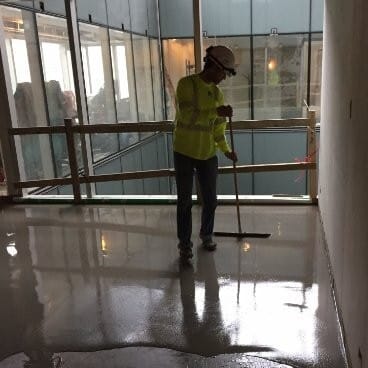
Science fiction writers love things that defy gravity. While we’re still waiting on hovercars, we’ve come up with astounding new technologies since the halcyon days of sci-fi; maglev trains, rocket ships to the moon and zero-g commercial flights have all become available. Having developed all these technologies, what’s going to come next should seem obvious to any creative thinker; floating floors!
Okay, I’ll admit, there was a bit of deception in my previous description; floating floors have absolutely nothing to do with zero gravity or science fiction, and they’re already both widely available and used. There are two types of flooring you need to know about; floating and non-floating. The difference is whether or not the floor is nailed or glued down; if it’s not, then it’s considered a floating floor. Floating floors are pieced together like a puzzle, and held together through friction and other physical forces; floating floors are not held together through attachment to a subfloor.
Floating floors have several advantages over their non-floating cousins. First, there’s no need to use glue to attach it to the subfloor, which can mean a more environmentally friendly flooring solution. Additionally, floating floors can breathe, because they’re not attached to a subfloor; that means if the flooring undergoes expansion and contraction due to fluctuations in temperature or humidity, it will be less prone to cracking and other structural hazards.
Floating floors come with a number of disadvantages, however. Durable materials like polished concrete and epoxy are of course, not considered floating; their installation relies on the careful construction of substrate, and precise application of the flooring. As such, most commercial and industrial flooring will not be floating. Materials used to create floating flooring tend to be quite thin, and their non-affixation to the subflooring means noise will travel easily from floor to floor.
Most floating floor is laminate flooring; this type is not at all suitable for industrial use, because it can’t take a lot of weight. Even an office reception area is probably not well suited to laminate flooring; eventually, all of that weight will cause the flooring to begin to sag. When professional flooring companies do an installation, they’ll make sure to account for changes in temperature and moisture so that the flooring can endure expansion and contraction.
Expansion and contraction will, of course, affect even the most durable flooring over time, and that’s why it’s important to find the best concrete repair company to fix any problems you have with your flooring. Cracks can allow moisture to affect reach rebar, creating rust that expands the rebar up to 10 times its normal size, creating further cracking. Susceptibility to these conditions is the trade-off for durable, long-lasting floors. Make sure your flooring is installed and repaired by experienced, professional contractors so that you can mitigate the disadvantages of a non-floating floor, while reaping the benefits.

